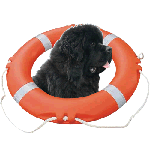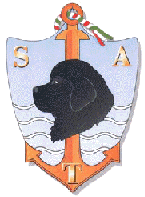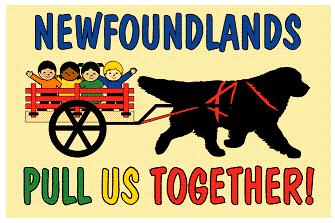
The DEIS just put out by the GGNRA, at least insofar as it concerns the proposed closures of the east and west beaches at Crissy Field, and 2.2 miles of Ocean Beach, due to the presence of the Western Snowy Plover, is without any scientific basis.
When the Federal Government moves to ban a single class of people from public land because of who they are, not anything they have done, they better have solid scientific evidence that the move is absolutely necessary. That is not the case here. Claims of "disturbances" of plovers by off-leash dogs are anecdotal. Reports are based on observations with no attempt to address or correct bias in the people making the observations (Golden Gate Audubon Society). The reports are based on commonly repeated assumptions that have never been put to the test. The GGNRA is moving to ban people with off-leash dogs from two large areas on Ocean Beach and Crissy Field solely because of who they are -- people with off-leash dogs -- not because their dogs have done anything. Other user groups that cause similar (and possibly greater) "disturbances" to the plovers are not banned. Without undisputed, solid evidence that proves off-leash dogs cause signficant "harm" to plovers, the GGNRA should not adopt a discriminatory ban against this single class of people -- those with off-leash dogs.
Some talking points to consider:
1) There is no scientific consensus that off-leash dogs have a significant impact on bird and wildlife populations.
A recent study by Forrest and Cassady St. Clair (2006) (see below for citation information) studied diversity and abundance of birds and small mammals at 56 sites in urban parks in Edmonton, Alberta. To their surprise, they found that whether a site was on-leash or off-leash had "no measurable effect on the diversity or abundance of birds and small mammals." Indeed, they said, "wildlife, particularly birds, in suburban and urban areas exist there because they are fairly tolerant of moderate levels of human activity."
2) The GGNRA's own studies indicate that dogs have no significant negative impact on the population of snowy plovers at Ocean Beach.
The November 15, 1996 report of snowy plovers by GGNRA staffer Daphne Hatch found that there was an increase of more than 100% in the number of snowy plovers in the years after the 1979 Pet Policy went into effect (allowing off-leash dogs on Ocean Beach and elsewhere). There was no negative relationship between the number of dogs and the numbers of plovers on the beach at the same time. Indeed, the 1996 Hatch Report says: "Factors other than the number of people or dogs, possibly beach slop and width, appear to exert greater influence over Snowy Plover numbers on Ocean Beach."
3) The GGNRA's own data indicate that there was no negative impact on plover abundance after the court rulings reinstated the 1979 Pet Policy allowing dogs off-leash on Ocean Beach. Indeed, the numbers actually increased.
A follow-up 2006 Hatch Report considers effects on the numbers of plovers after two Federal Court rulings reinstated the 1979 Pet Policy, allowing off-leash dogs back on Ocean Beach. According to the study, the maximum number of plovers ever recorded was in 1994, at a time when there were no restrictions on off-leash dogs on Ocean Beach. Numbers of plovers have varied since then (from a low of 14 in 2000 to 35 in 2005), but there is no correlation between when numbers of plovers were low and when dogs were allowed off-leash. Over the same time period, similar changes in plover populations have been seen at Half Moon Bay State Park. At that beach, there was once a maximum of 60 plovers, but there are currently only 25-30 present. This decrease cannot be blamed on dogs since dogs are not allowed on the beach at the state park at all, even on-leash. Clearly any decreases in plover populations in recent years are unrelated to whether off-leash dogs are present or not. Indeed, data from the 2006 Hatch Report posted by the GGNRA on its website actually show an increase in plover numbers in 2005, the year after the decision in United States v. Barley. The annual mean of snowy plover numbers (total number of plovers observed during all surveys in a year, divided by the number of surveys done that year) show an increase in plover populations after the Court rulings (from 26.55 in 2004 to 31.30 in 2005). The annual snowy plover median listed (the number of plovers counted in a single survey, with half the surveys counting more plovers than the median number and half the surveys reported less) is 28 for 2004 and 33 for 2005.
4) People without dogs pose an equal "risk" to plovers, yet there is no attempt to restrict their access to the plover areas.
Unable to prove any impact on plover population numbers, the 1996 Hatch Report argued that dogs "disturb" plovers. However in the entire 1.5-year study, only 19 out of 5,692 dogs -- less than one-third of one percent -- were observed deliberately chasing plovers, and none was reported to actually catch or harm a bird. The report adds that on another 15 occasions, at least 100 additional plovers were "inadvertently disturbed" by dogs, comparing this to the 48 plovers inadvertently disturbed by people without dogs, implying dogs inadvertently disturb plovers at least twice as often as people alone. But a closer reading of the report shows that the disturbances from people were noted in about half the recording time (24 hours of observations) as that devoted to studying dogs (40 hours). Had the two groups been observed for equal amounts of time, the number of disturbances would have been nearly the same. Yet there are no proposed restrictions on people without dogs who walk or run through the plover protection areas.
Note that in the 2006 Hatch Report, an incident is classified as a "disturbance" when, in response to an off-leash dog, a plover lifted up its head and looked around. This overreaching and misuse of the term "disturbance" illustrates the bias inherent to the Hatch observational studies.
5) The Federal Government cannot make policy decisions (such as this proposed closure) that are based on assumptions that have no hard data to back them up.
The assumption that any disturbance of plovers or other shorebirds causes significant problems for the birds is repeatedly stated as fact. However, even the 1996 Hatch Report says that "Little research has been conducted on the energetic effects of disturbances, and on whether individuals can compensate for this lost energy intake and increased energy expenditure." One recent study, conducted as part of a Senior Research Seminar at U.C. Berkeley did test the commonly repeated assumption that recreational disturbances changed the feeding behavior of snowy plovers. Megan Warren (2007) found no significant relationship between feeding behavior and direct disturbance by people recreating on the beach. "The Crissy Field study did not provide any relevant results, however, the data from the two Point Reyes study sites do not support the hypothesis that western snowy plovers in more heavily disturbed areas devote less time to actively foraging and more time to being alert." What other often-repeated assumptions about the effects of disturbances on plovers and other shorebirds will be similarly disproved when studies are done that put them to the test? Do we really want to restrict an entire class of people based on unproven assumptions?
6) The studies of off-leash dogs in the GGNRA do not consider "real" threats to plovers from natural predators like ravens.
Off-leash dogs may be more likely to chase ravens, a natural predator of plovers, because the ravens are so large. Thus the presence of off-leash dogs may keep ravens away from plover areas. This is one possible explanation for why the numbers of plovers increase when off-leash dogs are present.
7) If the GGNRA was sincere about protecting plovers, they would put up "temporary" fences to keep ALL park visitors out of the plover protection areas, not just people with offleash dogs. To restrict only one class of park users and not others who have similar "effects" is discriminatory.
8) The GGNRA has not taken any other action to protect plovers, despite clear opportunities to do so.
During the recent Cosco Busan oil spill, the GGNRA quickly erected floating booms to keep oil from entering the Crissy Field lagoon at the eastern end of Crissy Field, yet made no attempt to similarly protect the plover area at the western end of the beach. The oil posed a significant risk to the plovers, yet the GGNRA did nothing to protect them from it. Indeed, oiled plovers have been reported in the GGNRA. The GGNRA has allowed sporting events like the 2006 Turkey Trot to proceed, with the result that at least 1000 people (more likely 1500) walked or ran through the plover protection area on Ocean Beach. Park rangers routinely drive four-wheel drive cars and trucks through the Ocean Beach plover protection area while pursuing people with off-leash dogs. During Fleet Week, the plover protection area at Crissy Field is filled with people watching the air show, with no restrictions or protections in place. Dead sea mammals are left on beaches, encouraging natural predators of plovers like ravens to come to the beach.
9) The GGNRA should focus enforcement on off-leash dogs who actually do chase plovers. Banning an entire class of people (those with off-leash dogs) from the area because of the actions of a very few is discriminatory and does not offer the plovers any significant increase in safety.
In order to ticket people with off-leash dogs in the plover protection areas, Park Rangers will have to be present at the sites. They could, therefore, easily cite people whose dogs chase plovers (the few) and leave those people whose dogs ignore the plovers (the vast majority) alone.
10) Even if the restriction is justified, the area closed at Ocean Beach is much too large.
The plovers are located down by Noriega Street, and yet the area closed begins near Lincoln, nearly six city blocks farther north. A similarly large buffer zone is claimed at the southern end of the plover area. The buffer zones are too large and should be shortened.
In short, the proposed closures are based on arbitrary and capricious "science". Tell the GGNRA (via a template on the Ocean Beach DOG website) to keep the 1979 Pet Policy as the law. The federal government has no business in our backyard!!!!!
Scientific Citations:
1) "Effects of dog leash laws and habitat type on avian and small mammal communities in urban parks," Andrew Forrest and Colleen Cassady St. Clair, Urban Ecosyst (2006) vol 9, p. 51-66
2) "Recreation Disturbance Does Not Change Feeding Behavior of the Wester Snowy Plover", Megan Warren, UC Berkeley Environmental Sciences 196, Senior Research Seminar, May 7, 2007













































